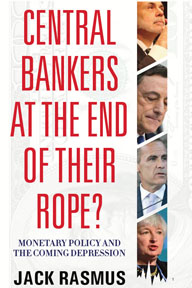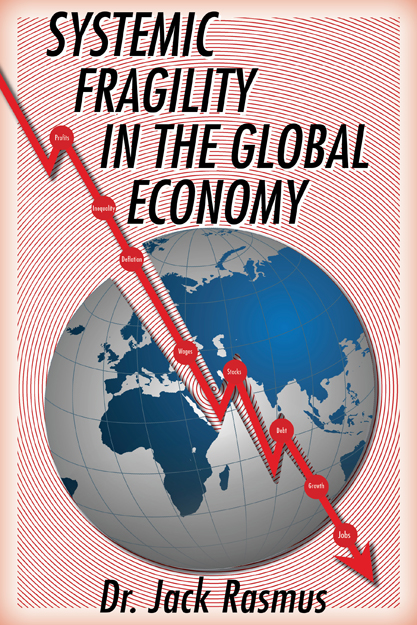Late Friday afternoon, December 28, President Obama held a press conference reporting on the status of negotiations on the so-called ‘Fiscal Cliff’. Having met with House and Senate Democrat and Republican leaders earlier the same day, in his press conference Obama reported both sides had made progress during the day toward an eventual deal. Senate leaders Reid and McConnell were in fact working on an agreement as he spoke, Obama noted.
Whatever Senate leaders Reid and McConnell may work out will almost certainly come to a Senate vote by December 31st. Less certain is whether the House of Representatives will allow a vote on the same Senate package to be taken by then as well. An ominous indication of what the details of the Senate version might be were hinted by Obama during his press conference, as he indicated the deal would require “the wealthiest to pay a little more” and that spending would be cut “in a responsible way”. Watch for an emphasis on ‘little’ with regard to taxes, and on ‘responsible’ meaning major spending cuts.
Should the House balk at voting on the forthcoming Senate proposal, Obama noted he was prepared to have Senate Democrat leader, Harry Reid, introduce a second bill, the outlines of which he, Obama, suggested before the Xmas holidays. That alternative bill would reintroduce the tax cuts for the 98% earning less than $250k a year, pass an extension of unemployment insurance, as well as other unspecified economic growth measures.
The first package being developed this weekend in the Senate by Reid-McConnell will not come up for a vote in the Senate until Monday, December 31. The House will then either vote it up as well or refuse to vote. If the latter, then the Obama-Reid backup proposal will likely come up for a vote on it on January 2 or 3. At that point, the Bush tax cuts will have expired officially. That means the vote on the tax cuts for the 98% will be a vote to reintroduce and pass the 98% tax cuts. House radicals who might refuse to vote on the Senate’s initial December 31 proposal—in which tax cuts for the wealthiest 2% aren’t extended—might then find themselves in the difficult position of NOT voting for reintroducing tax cuts for the 98%. This possibility will almost certainly force the House radicals to vote for the Senate’s first version on the 31st, especially if that Senate version includes major cuts in spending for social security, Medicare, Medicaid and the like, and ‘smoke and mirrors’ tax revenue hikes on the 2%. In short, the House radicals now find themselves ‘boxed in’, as Obama doubles down on them.
Metaphorically, they have jumped out of Boehner’s ‘Plan B’ frying pan proposal of last week, onto the hot stove of Obama’s double down proposal announced today. Watching them ‘hot step it’ to an eventual deal may prove entertaining.
As this writer has predicted since November, a deal will be concluded between the two wings of the ruling party of Corporate America. That deal will come in three stages: the first a partial settlement to get through the January 1, 2013 artificial deadline to show the ‘markets’ (e.g. Investors, speculators and corporate America) that a deal is being hammered out, albeit in stages. The second stage negotiations will commence immediately after next week on additional items, continuing through February to March 2013. And a final third stage will come later this year, involving a major revision of the US tax code that will result in big corporate tax rate cuts.
AN ALTERNATIVE ‘ONE TAX’ SOLUTION
While this ‘dance’ of negotiations plays out over the next week, readers should consider that the entire ‘Fiscal Cliff’ charade could be resolved with one program, one proposal involving taxation on the wealthiest 1% of US households—i.e. those whose average annual income is about $1.5 million and whose effective and actual income tax rate today is not the nominal 35% but in fact only about 22.5%.
The very wealthy 1% actual income tax rate has never been the 35% top rate. In 1980 that top rate was 70% but the actual effective rate they paid was only 45%. Similarly, today the reported top rate is 35% but the actual rate on average 22.5%. Some hedge fund managers making billions a year actually pay less than 10%.
University of California professor, Emmanual Saez, and his colleagues, Thomas Picketty and Stefanie Stantcheva, a few months in the third quarter 2012 issue of ‘Tax Justice Focus’, estimated that by simply making the wealthiest 1% pay the same effective, actual tax rate they paid in 1980 (45%) it would raise an additional $405 billion a year in tax revenue. Over a decade, that’s more than $4 trillion—which is coincidentally the amount identified as necessary to reduce the deficit over the coming decade by all the parties, Democrat and Republican, as the deficit cutting target amount. Since the Simpson-Bowles report of November 2010, the target has always been $4 trillion.
Thus, one simply tax measure would solve the entire fiscal cliff issue, generate the $4 trillion in deficit reduction, allow all the other tax cuts in question to continue, and require no cuts whatsoever in social security, Medicare, Medicaid or anything else.
Professors Saez and others estimated this $405 billion on an assumption of a GDP of $15 trillion in 2011. Today’s $16.5 trillion GDP means this one tax measure would now raise more than $450 billion a year. The 45% tax on the richest 1% amounts to a 2.7% increase in government tax revenue as a percent of GDP. If you think that is too much, consider that federal tax revenues as a percent of GDP was 20.6% in 2000 before George W. Bush began his investor-corporate tax cuts in 2001. That 20% had been the average for a number of years. But after Bush’s two recessions, his $3.4 trillion in tax cuts, his wars, runaway health care costs, and the historic weak recovery of the US economy under Obama since 2008, federal tax revenue as a percent of GDP had fallen to 14.4% from the 20.6% of only a decade or so ago. So taxing the 1% at the 1980 effective rate raises tax revenue as a share of GDP by 2.7%, to about 17%. Taxes can and should be raised on Corporate America as well, to get back to the 20%.
But don’t count on the latter, since Obama has promised throughout the election campaign to cut corporate tax rates from the current 35% to 28%. And don’t be surprised by the major spending reductions that will come out of current fiscal cliff negotiations, in the next few days and continuing throughout this year. Fiscal Cliff is only a cover phrase for what amounts to ‘Austerity American Style’.
The problem with the US deficit and debt is not a spending program problem. It has always been overwhelmingly a tax cut for the rich and corporations problem. And it can be resolved with one program and proposal to ‘make the millionaires pay 45%’. It’s that simple.
Jack Rasmus
Jack is the author of the 2012 book, “Obama’s Economy: Recovery for the Few” , and host of the weekly radio show, Alternative Visions, on the Progressive Radio Network, PRN.FM. His website is http://www.kyklosproductions.com, his blog, jackrasmus.com, and twitter handle #drjackrasmus.
 Dr. Jack Rasmus @drjackrasmus
Dr. Jack Rasmus @drjackrasmus









This tax proposal would double the federal taxes paid by the 1%, it’s not likely to fly in our plutocracy. But it makes sense, the 1% have doubled their share of total income since 1979, and they have quadrupled their incomes while 95% of families have fallen behind the GDP growth rate. The GDP/capita increased by 68% during 1979-2007, and almost all, 95% did not achieve that growth rate, more like 37% growth over 28 years for the families in the middle 60% income range according to CBPP on inequality, see graph: http://www.cbpp.org/cms/index.cfm?fa=view&id=3629 —
The top-earning 1% earned 8% of all income in 1979, and 17% in 2007, post-taxes and post-transfers, according to the CBO report Historical Trends in Income Distribution between 1979 and 2007. This Saez, Picketty and Stantcheva proposal would double their income taxes, increasing their total tax burden from $419 billion to $869 billion. I’m looking at the Joint Committee on Taxation report. This from page 28 of http://www.novoco.com/hottopics/resource_files/jcx-18-12.pdf —
The top 0.8% of taxpayers (not 1%) with incomes over $500,000, take in 15.1% of all income or $1.7 trillion (total US personal income of $11.468 trillion), averaging $1.47 million per taxpayer, and are 1.156 million taxpayers, and they pay 20.8% of all federal taxes, and their tax rate is 24.8%, and they paid $418.8 billion in 2011.
It’s pleasant to see UC Berkeley professors present such a radical tax jump on the super-wealthy.
Here’s a site at Citizens for Tax Justice that shows the effective over-all tax rates in the U.S. — http://ctj.org/ctjreports/2012/04/who_pays_taxes_in_america.php
The top 1% pay a rate of 30.9% and the average for all taxpayers is 27.9%. This includes state and local taxes.
I’m tempted to look at Rasmus’ Epic Recession and the 28 proposals to end the recession. It calls for about $1 trillion in government jobs creation, which is also at the amount below potential GDP our economy is functioning, 5 to 6% below full potential. This is not a wild program, the EPI presented a program “Putting America Back to Work” that added up to $950 billion per year to add 11 million jobs. It only sounds unreasonable and irresponsible when compared to what passes as prudent economic policy, or as Obama says, “responsible” cuts, or whatever. Returning to 1979 is irresponsible? Wallowing forever in a quicksand economy is responsible? We need to employ at fair income levels all who wish to work — full employment. Each worker generates today over $109,000 in output on average according to the SF Federal Reserve. That should be enough to eliminate poverty and allow hiring of the 10% whom private enterprise is unwilling to hire. Last I looked private sector employment was still at the 2000 level, 111 million workers, even though the working population has added another 31 million. When 1 in 6 workers is still looking for full-time year-round work, allowing that talent to waste away unproductively is irresponsible.
The last chapter of my most recent book, “Obama’s Economy: Recovery for the Few”, Pluto books, April 2012, updates my alternative recovery program first proposed in the 2010 book, “Epic Recession: Prelude to Global Depression”, Pluto, May 2010. Thanks for posting for readers, Ben, the various websites for the data. Your comments to my blog posts are always very factual and insightful. Do continue, for the benefit of all the readers.